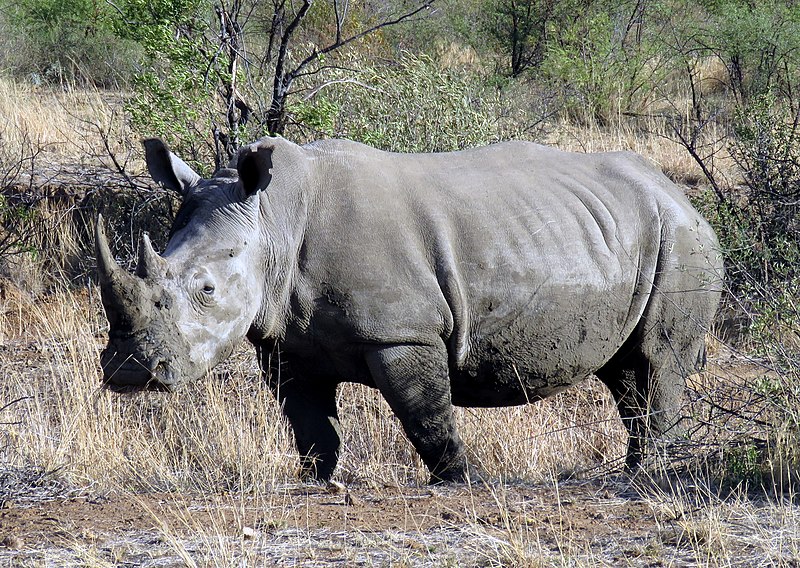 |
| A southern white rhinoceros in South Africa |
The Combined DNA Index System (CODIS), which holds genetic proof collected from crime scenes and serial offenders, is known to help police officers catch criminals. Now, according to a study published in the journal Current Biology, an identical DNA database known as the Rhino DNA Index System (RhODIS) is helping connect international rhino horn traffickers to a poaching scene. Researchers say that it contains data from about 5,800 crime cases related to rhino poaching since 2010 and more than 120 case reports built from its data have helped investigators link between the poachers and evidence, such as carcasses and horns. A research team led by Cindy Harper, director of Pretoria University's Veterinary Genetics Laboratory, one case included three horns from two rhino carcasses led to a 29-year sentence. According to Stephen O'Brien, a co-author of the new study, Ms. Harper trained the whole anti-poaching staff to not just gather materials from poached animals but also enter them into an iPad and a small program designed by RhODIS that gets uploaded into the database as soon as they come within WiFi range. He further added that it is extremely essential to consider the possibility of unrelated DNA becoming a genetic match to crime scene evidence. This is called "match probability," and Dr. O'Brien pointed out that prosecutors should prove that match probability is very low in order to win a case. A good lawyer would end up saying that the match of rhino DNA to DNA on seized items held by a criminal "was just by chance" if the match probability was high. To overcome this obstacle, Dr. O'Brien recruited a team of twenty programmers from St. Petersburg State University's Theodosius Dobzhansky Center for Genome Bioinformatics. The study showed that the programmers designed a statistical model for utilization of match probability statistics, and indicated that the probability of a chance match is "on the order of one in a million."
I find it to be very impressive that a tool used to hold genetic evidence is being used in the battle against rhino poaching and the illegal smuggling of rhino horns. The RhODIS has received much praise for being able to hold a vast amount of data from numerous rhino poaching cases and research labs in South Africa to build more than 120 case reports to help connect poachers and evidence in the form of rhino carcasses and horns. According to Bas Huijbregts, World Wildlife Fund's African species manager, South Africa has given the system attention and noted evidence from it in the country's courts. This shows that the RhODIS is helping in painting a picture of global criminal networks. It is said that Kenya also implemented the technique and other countries in southern Africa, including Botswana and Zimbabwe, have started doing the same. Mr. Huijbregts further added, however, that more effort is needed to combat rhino poaching and the illegal trafficking of rhino horns. I, too, believe that the public should step in to help put a stop to poaching of rhinos and trafficking of their horns, especially in China and Vietnam where rhino products are sold to the growing middle-income classes. The combination of DNA technology and public effort would really help slow down and ultimately put an end to poaching and illegal trafficking of rhinos and other endangered species. Members of law enforcement agencies, conservation and animal specialist groups, and research institutes alone cannot put a stop to this ongoing crisis. It is very crucial the global public should help the authorities by recognizing the problem and acting upon it.
View article and video here
No comments:
Post a Comment